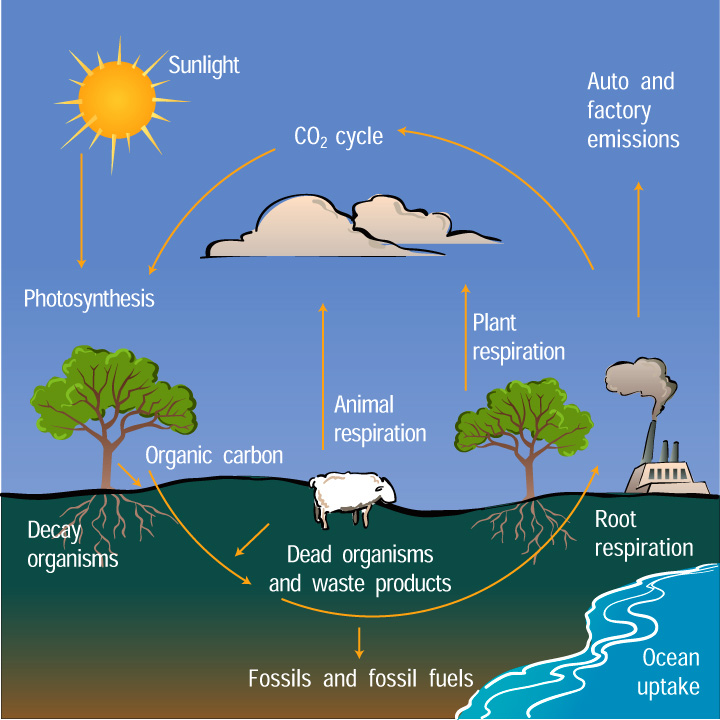The Carbon Cycle
The good news is that Nature has an incredibly ingenious method for dealing with carbon in all its varied forms called the carbon cycle. Carbon binds with oxygen to form carbon dioxide that is absorbed by plants and trees. Forests and other plant life absorb CO2, expel the oxygen we need to breathe and convert the CO2 to biomass or wood. When trees are felled and the wood burned, the stored CO2 is released into the atmosphere and an important storage medium of carbon is lost. Fewer trees mean fewer places for CO2 to be stored so it remains in the atmosphere. In 2015, deforestation and other land use changes contributed 3.5 billion tons of CO2 to the atmosphere.
Also, not everyone knows that the oceans also absorb CO2. Where the ocean and atmosphere touch, CO2 is absorbed and carried by currents to the depths. As the ocean takes in ever increasing amounts of CO2, it also becomes more acidic, threatening marine life. The oceans also absorb 90% of the heat trapped by greenhouse gases, contributing to ocean warming. Also, much like plants and forests on land, microscopic phytoplankton that live on or near the ocean surface consume carbon dioxide, release oxygen and form the base of the world’s marine food chain. These tiny plants produce more that half of the Earth’s oxygen. (https://climate.nasa.gov/).
The bad news is that human activity is upsetting the delicate balance of the Earth’s complex breathing system and the carbon exchange cycle that occurs between our oceans and forests. The world is quickening the rate of CO2 accumulation and it shows no sign of slowing down: human activity that generates CO2 is increasing, deforestation is reducing the available volume of wood that can store CO2, and the oceans are becoming warmer and more acidic. It’s fair to ask: where is the tipping point?
Nature makes human development possible, but our relentless demand for the earth’s resources is accelerating extinction rates and devastating the world’s ecosystems…..
